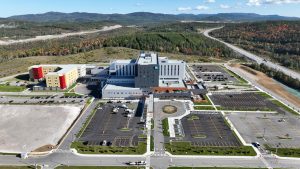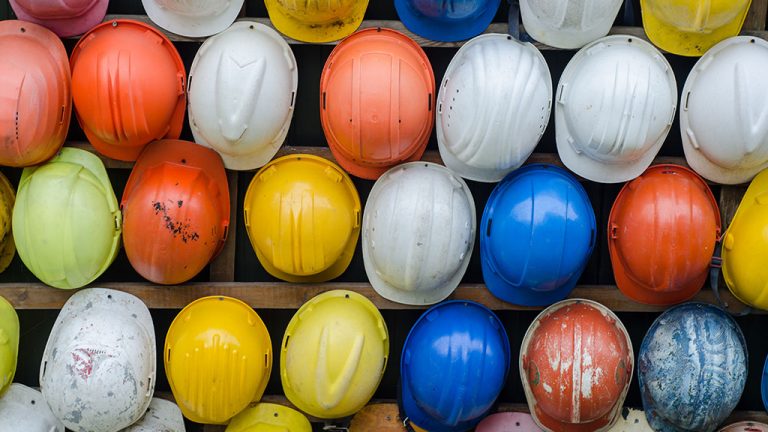The federal government has announced 2030 GHG reduction targets covering a broad range of industry sectors. The oil and gas industry has been highlighted for its current 26 per cent contribution to the ║┌┴¤│ď╣¤═°ÔÇÖs total GHG emissions. Transportation was also identified.
The construction sector itself was not specifically named in the of GHG emitters, despite the fact 40 per cent of global GHGs come from the creation and operation of buildings. That number can be broken down between building operations and actual construction, including the processes behind steel, concrete and MTC manufacturing.
Although not singled out, construction is nevertheless part of the overall solution sought by the federal government. ItÔÇÖs simply hidden deep in the reportÔÇÖs details.
Some of constructionÔÇÖs GHG emissions is most likely included in the 12 per cent GHG contribution attached to the sector labelled ÔÇťBuildings.ÔÇŁ However, given its reach, construction-related GHGs could be contributors to other named sectors, such as heavy industry, electricity, transportation, and possibly even waste.
Details within the describe how ÔÇťBuildingsÔÇŁ must be part of the solution. The government appears to count heavily on its hopes for stricter building codes across the country.
ÔÇťBuilding codes are key enablers of a net-zero buildings sector. Strong building codes set the baseline for building performance and lock in best practices in construction,ÔÇŁ the report says. ÔÇťThe Government of ║┌┴¤│ď╣¤═° actively works with industry as well as provincial and territorial governments on the development of increasingly stringent, performance-based model building codes, including to introduce net-zero energy-ready model codes for new construction and the code for retrofits to existing buildings. Wide-scale adoption of these codes will go a long way to improving the performance of ║┌┴¤│ď╣¤═°ÔÇÖs building stock.ÔÇŁ
Ambitions for ÔÇťwide-scale adoptionÔÇŁ will likely fall short. Energy efficiency and building experts say the newly released 2020 National Building Code (NBC), two years late and seven years in the making, represents a very small improvement over the 2015NBC. It is criticized for not being ÔÇťperformance-based.ÔÇŁ
Many feel it will fail to lead ║┌┴¤│ď╣¤═° towards its 2050 net-zero ambitions.
As is their right, provinces can use the 2020NBC as a model from which to develop their own provincial building codes and even improve on them. In fact, British Columbia is one province expected to enhance its application of the 2020NBC.
However, Ontario is not. The proposed Ontario Building Code (OBC) is being strongly criticized as being a watered-down version of an already weak 2020NBC. As a result, it appears very unlikely that the proposed OBC and NBC will propel the construction industry close to the federal governmentÔÇÖs GHG reduction ambitions directed towards ÔÇťBuildings.ÔÇŁ
Furthermore, the federal announcement does not involve any legislation, just targets supported by a number of incentives, tax breaks, grant programs and ÔÇťinvestments.ÔÇŁ However, they are prepared to throw a lot of money at their overall ambitions.
The ║┌┴¤│ď╣¤═° Greener Homes Grant will provide up to 700,000 grants of $5,000 for home energy retrofits. The Green and Inclusive Community Buildings program commits $1.5 billion to projects that improve energy efficiency through retrofits, repairs or upgrades, and new builds. The ║┌┴¤│ď╣¤═° Infrastructure Bank targets $2 billion in financing for large-scale public and commercial building retrofits. ThereÔÇÖs another $150 million directed towards net zero buildings by 2050 through the ║┌┴¤│ď╣¤═° Green Buildings Strategy.
The government notes, ÔÇťmore than 80 per cent of ║┌┴¤│ď╣¤═°ÔÇÖs building stock will be made up of existing buildings that are still in operation in 2030. It is also imperative that new buildings are net-zero ready and energy efficient, to avoid the need for future retrofits aimed at the existing building inventory.ÔÇŁ
To that end, the government plans ÔÇťto develop a Low Carbon Building Materials Innovation Hub to drive further research, building code reform, and demonstration activities, all promoting the use of lower carbon construction materials (e.g., wood, steel, cement, etc.) in the built environment.ÔÇŁ Within that are several programs and hundreds of millions of dollars being made available through ÔÇťinvestmentsÔÇŁ and programs.
It is hoped that such ambitious federal initiatives can overcome the absence of strong leadership demonstrated by this latest cycle of new building codes. As many observers have commented, the price tag for GHG reductions only gets higher as time goes by.











Recent Comments
comments for this post are closed